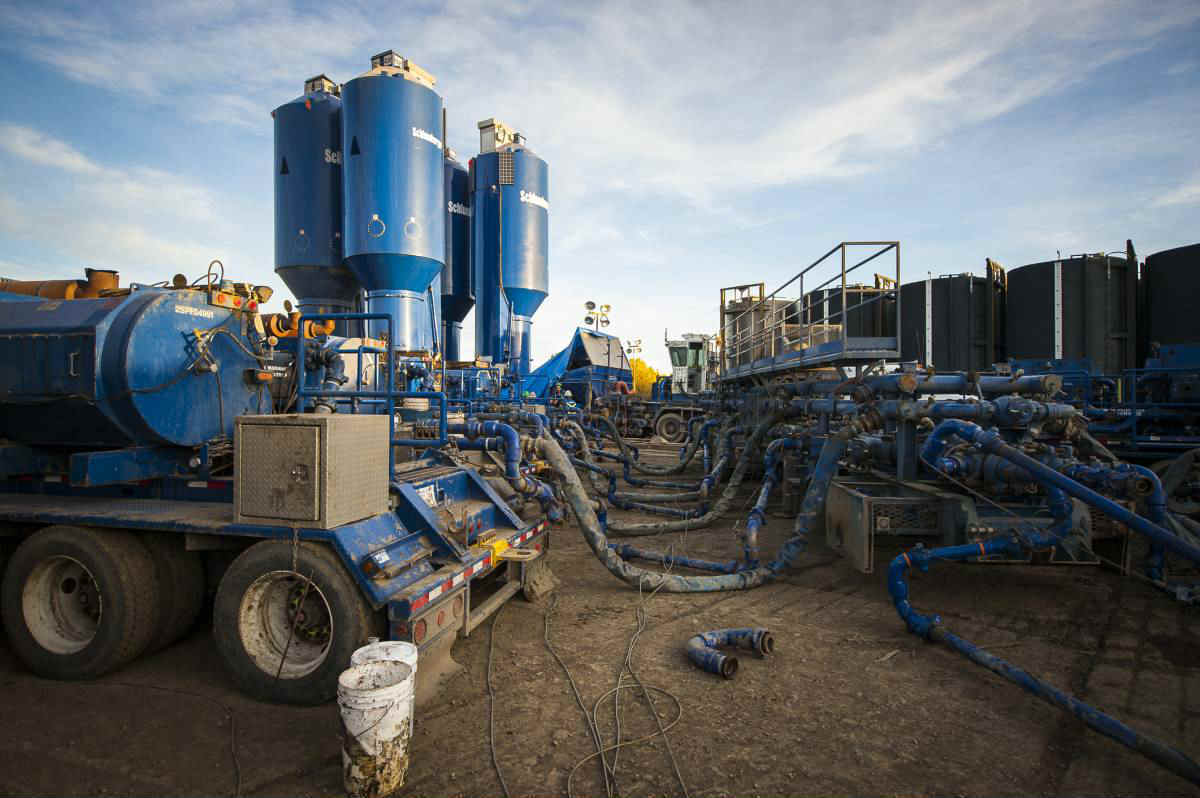Many companies fail to provide appropriate safety equipment and training mandated by OSHA.

Workplace injuries can result from one-time incidents such as falls, equipment failures, and vehicle accidents, or from cumulative trauma or prolonged exposure to hazardous chemicals. Some types of workers, particularly those working the oil fields are exposed to highly toxic chemicals and fumes each day. This puts them at a very high risk of serious health problems compared to workers in other industries.
Many companies expose their workers to highly toxic chemicals and fumes, and fail to provide appropriate safety equipment and training mandated by the Occupational Safety and Health Administration (OSHA). Also, many companies fail to notify their workers that the chemicals that they are handling are toxic in nature. The workers become aware of this only after they have been exposed to the fumes and suffered injuries. In this post, we will discuss the dangers of toxic fume exposure.
Fracking and Toxic Fume Exposure
According to some studies conducted by the National Institute for Occupational Safety and Health (NIOSH), when oil field workers perform hydraulic fracturing work, they are exposed to airborne silica. This poses a serious health threat to these workers. Silica is a naturally occurring mineral in the earth, and if particles of crystalline silica are inhaled, these minute particles can significantly affect the capacity of the lung’s gas exchange regions, so the lungs are not able to take in adequate oxygen.
The Process of Fracking
Fracking, or hydraulic fracturing, is a process in which large amounts of sand and water are pumped into a well. This is done at a high speed to increase pressure inside the well so that formations such as shale get fractured, and oil and gas are released into an oil well.
In recent years, the practice of fracking has become increasingly common, because of new methods that improve accessibility to natural gas and oil deposits below the earth’s surface. During the process, the workers are exposed to crystalline silica dust. Exposure to silica increases the risk of developing debilitating and even fatal lung diseases including the much dreaded silicosis. However, these are not the only risks oil field workers face. They are also exposed to other toxic chemicals and fumes including diesel particles, exhaust gas fumes and methane fumes.
OSHA trained specialists are available to assist companies and workers with compliance information and organize training programs to educate the companies and workers regarding hazards in specific industries and the standards set by OSHA. Despite this, many companies choose not to utilize these resources and eliminate the risk of toxic fume exposure.
Contact a Missouri Workers Compensation Lawyer
If you have suffered an injury or developed an occupational illness as a result of toxic fume exposure in the workplace, you may be entitled to workers compensation benefits. Depending on the severity of your illness, you may receive partial or total disability benefits. Speak with a competent St. Louis worker injury lawyer to understand your rights.
Contact the Law Office of James M. Hoffmann by calling (314) 361-4300 or by filling out our online contact form.
Workplace Injury and Accident Causes
Asbestos Exposure
Asbestos Removal
Second Hand Asbestos Exposure
Sexual Assault Workplace
Physical Assault at Workplace
Workplace Injuries Assembly Line
At Fault Accident
Workplace Attack
Benzene Exposure
Injured on Lunch Break
Building Collapse
Workplace Bullying
Chemical Exposure in the Workplace
Chemical Hazards in the Workplace
Cold Stress in the Workplace
Combustible Dust Explosion
Computer Use
Construction Site Accident
Conveyor Belt Accident
On the Job Injury Cause by Coworker
Crane Accident
Injuries from Desk Jobs
Diesel Exhaust Fumes Exposure
Digging Injury
Breaking Company Policy
Drowning at Work
Workplace Drug Use
Electrical Workplace Accidents
Elevator Accident
Equipment Accident
Ergonomics in the Workplace
Excessive Overtime
Workplace Explosion
Extreme Danger
Fall at Work
Fire in the Workplace
Slicer Accident
Forklift Accident
Walk in Freezer
Gas Pipeline Accident
Hard Work
Workplace Hazardous Substances
Hazardous Equipment in the Workplace
Heavy Machinery Accident
Horseplay in the Workplace
Danger at Workplace
Insomnia in the Workplace
Jumping Accident
Ladder Falls at Work
Loading Dock Accident
Machinery Accident Workplace
Equipment Failure Accident
Mining Accident
Mold in the Workplace
Nail Gun Accident
Workplace Noise
Non Collision Accident
Heavy Objects
Workplace Office Equipment
Opioid Use
Injury at Work Due to OSHA Violation
Overexertion Injuries at Work
Use of Pain Killers
Power Tool Injury
Inadequate PPE
Repetitive Motion Injuries in the Workplace
Mansfield Bar
Scaffolding Accident
Secondhand Smoke in the Workplace
Side Effects
Silica Exposure
Sleep Disorder
Slip and Fall Injuries in the Workplace
Stairs at Work
Struck by a Vehicle
Tar Fumes
Toxic Chemical Exposure
Toxic Fumes in the Workplace
Car Accident While Working
Trench Collapse
Trips at Work
Unsafe Working Conditions
Workplace Violence
Welding Injury
Winter Hazards in the Workplace
Working Shifts
